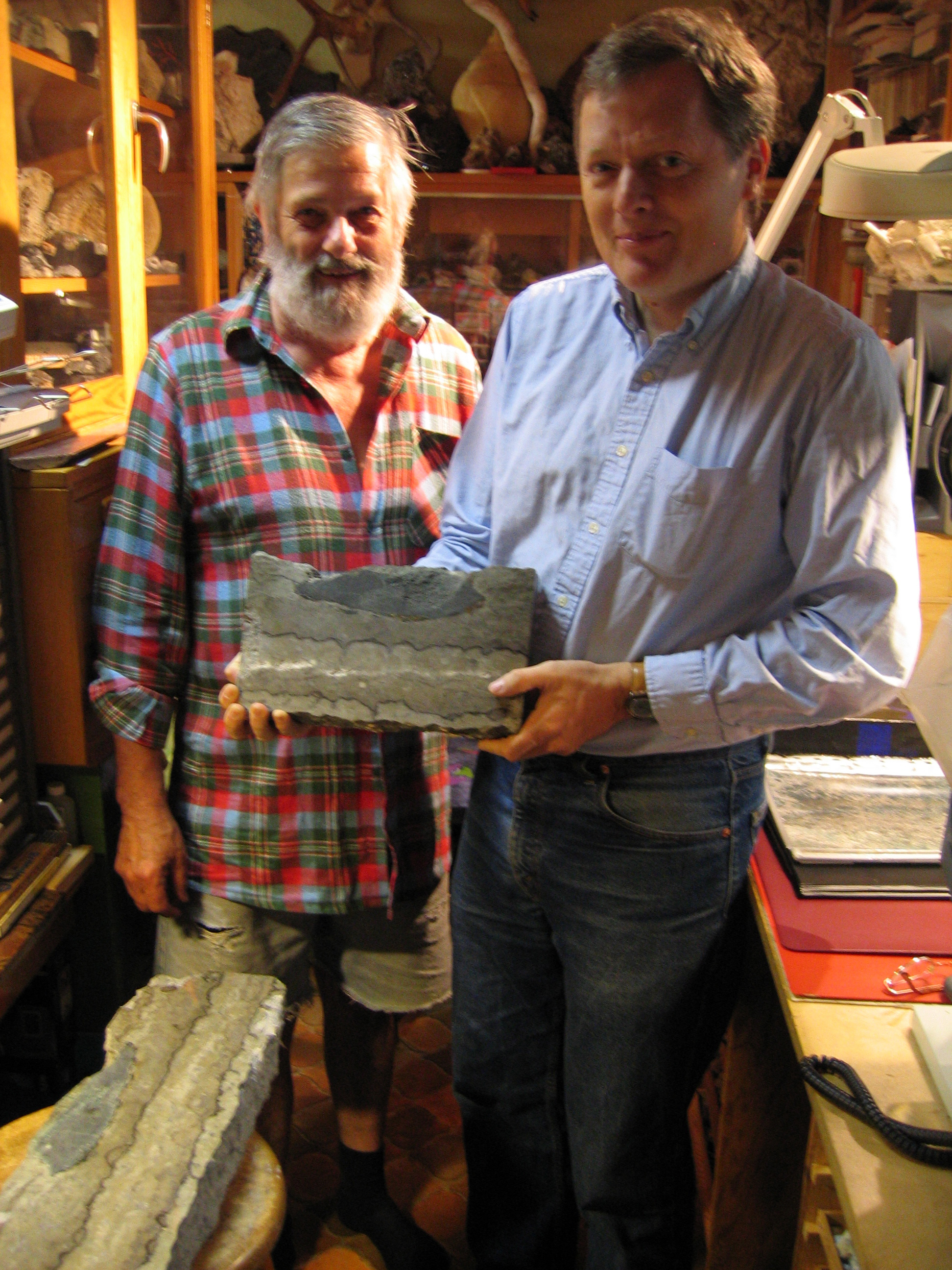Reconstructing the flux of extraterrestrial matter to Earth
With funding from NSF we are using platinum group element abundances, osmium and helium isotope compositions and other geochemical and field evidence to detect and quantify the abundance of extraterrestrial matter in the sedimentary record. Our goal is to improve our understanding of the temporal and spatial variations in the accretion of extraterrestrial matter on Earth throughout Earth history.
Our work has demonstrated that the flux of extraterrestrial matter during the Cenozoic has been more or less constant at about 30,000 metric tons per year, if averaged over 100,000 time intervals in bioturbated marine sediments (Peucker-Ehrenbrink, 1996, GCA 60, 3187-3196; Peucker-Ehrenbrink & Ravizza, 2000, GCA 64, 1965-1970).
Our group has also documented that the flux of meteorites and fine extraterrestrial matter may have been one to two orders of magnitude higher during the Ordovician, possibly as a result of a major collision in the asteroid belt (Schmitz et al., 1997, Science 278, 88-90; Schmitz et al., 2001, EPSL 194, 1-15; Schmitz et al., 2008, NatureGeoscience). A record of this event is preserved in limestone quarries in Sweden.
Partners/Collaborators
Prof. Birger Schmitz (Lund University, Sweden), Dr. Mario Tassinari (Sweden), Prof. Greg Ravizza (U Hawaii), Prof. Tarun Dalai (Indian Inst. Technol.)
